Did you know that fresh Mexican produce brings in billions of dollars to the global market each year? Traditional Mexican veggies are not only delicious but also have a rich history dating back thousands of years. If you’re looking to add some exotic flavors to your garden and elevate your culinary adventures, it’s time to explore the world of Mexican vegetables.
Key Takeaways:
- Mexican vegetables are a lucrative industry, contributing billions to the global market.
- These vegetables have a long history and are deeply rooted in Mexican cuisine.
- Growing Mexican vegetables in your garden can add unique flavors to your meals.
- Mexican vegetables are diverse and offer a range of culinary possibilities.
- Exploring Mexican vegetables allows you to experience the authenticity of traditional Mexican cuisine.
The Delightful Jicama Plant
Jicama, also known as Mexican turnip, yam bean, or potato, is a tropical plant native to Mexico and Central America. It belongs to the bean family and produces delicious and versatile edible tubers. These tubers have a brown skin and white flesh, resembling the texture of a turnip or beet.
Jicama is a staple in Mexican cuisine and adds a refreshing crunch to various dishes. It can be enjoyed in stir-fries, sliced and eaten raw in salads, or even used as a healthy alternative to chips for snacking. With its mild and slightly sweet flavor, jicama pairs well with a variety of seasonings and ingredients.
Not only is jicama delicious, but it also offers several health benefits. It is high in vitamin C, which supports immune function and collagen production in the body. Jicama is also rich in antioxidants, which help protect against cell damage caused by harmful free radicals. Additionally, it is a good source of dietary fiber, which promotes digestion and helps maintain a healthy weight.
While the tubers of the jicama plant are the star of the show, it’s important to note that other parts of the plant are not edible. The leaves, flowers, and seed pods of the jicama plant are poisonous and should be avoided.
A Versatile Ingredient for Endless Culinary Adventures
“Jicama adds a delightful crunch to salads and stir-fries, making it a versatile ingredient for a variety of dishes.”
Whether you’re looking to enhance the texture of your salads or add a unique twist to your stir-fries, jicama is an excellent choice. Its mild flavor allows it to blend well with other ingredients, making it a versatile addition to your culinary creations.
| Jicama Benefits | Jicama Uses |
|---|---|
| High in vitamin C | Salads |
| Rich in antioxidants | Stir-fries |
| Good source of dietary fiber | Snacks |
As you can see from the table above, jicama is not only packed with nutrients, but it also offers a wide range of culinary possibilities. Whether you’re looking to create a refreshing salad, a flavorful stir-fry, or a healthy snack, jicama can deliver.
To make the most of jicama’s unique texture and flavor, try combining it with other fresh ingredients, such as cucumbers, bell peppers, or citrus fruits. A squeeze of lime juice and a sprinkle of chili powder can add a tangy and spicy kick to your jicama creations.
So why not add some jicama to your next meal? Its crisp texture, mild flavor, and numerous health benefits make it a delightful addition to any dish.
Growing Jicama in Your Garden
When it comes to growing jicama, you’ll be delighted to know that it is relatively easy to cultivate this tropical plant in your garden. However, keep in mind that jicama requires a long growing season, so patience and careful nurturing are key to a successful harvest. Here are a few essential tips to help you grow healthy jicama plants:
Optimal Growing Conditions for Jicama
To ensure the best results, jicama plants thrive in full sun and warm soil. Aim to provide them with at least 6 hours of direct sunlight each day. Jicama also prefers well-draining sandy loam soil, which helps prevent root rot and allows the tubers to develop properly. Before planting, make sure to prepare the soil by removing any weeds or debris and adding organic matter to improve its fertility.
Choosing Jicama Seeds or Transplants
You have two options when it comes to starting your jicama garden: using jicama seeds or transplants. If you opt for seeds, sow them directly into the garden after all chances of frost have passed. Make sure to space the seeds about 6 inches apart and plant them 1 inch deep. If you choose transplants, you can start them indoors and then transplant them once the soil has warmed up, typically around the same time. This option allows you to extend the growing season.
Watering and Care
Jicama plants love moisture, so regular watering is crucial to keep the soil consistently moist. Aim to provide them with about 1 inch of water per week, either through rainfall or irrigation. Mulching around the plants can help retain moisture and suppress weeds. Additionally, as the vines grow, training and pruning them will help prevent excessive spreading and promote better air circulation.
Pests and Diseases
While jicama is generally resistant to pests and diseases, some common issues may arise. Aphids, spider mites, and mealybugs can occasionally infest the plants. Regularly inspecting the leaves and stems can help you detect and address any pest issues promptly. Fungal diseases such as powdery mildew and root rot can occur in excessively humid conditions or overwatering. Ensuring adequate spacing, good air circulation, and proper watering practices will help prevent these problems.
By following these guidelines, you can successfully grow jicama in your garden, and soon enough, you’ll be enjoying the delicious and crunchy tubers that this amazing plant produces.
| Growing Requirements | Jicama |
|---|---|
| Light | Full sun |
| Soil | Sandy loam |
| Watering | Regularly, keep soil moist |
| Spacing | 6 inches apart |
| Transplanting | Start indoors and transplant after last frost |
| Pests | Aphids, spider mites, mealybugs |
| Diseases | Powdery mildew, root rot |
Harvesting and Storing Jicama
After patiently tending to your jicama plants for 5 to 9 months, it’s finally time to harvest the delicious tubers. To ensure optimal flavor and texture, it’s best to harvest jicama when the tubers are between 3 to 6 inches in diameter. Larger tubers may have less flavor and a tougher texture.
Before harvesting, it’s important to stop watering the plants for at least 2 weeks. This allows the tubers to cure and develop their sweet, crisp flesh. Once the tubers are ready, gently dig them up from the soil, being careful to avoid damaging the delicate skin.
Pro Tip: Handle jicama with care, as the skin can be easily scratched or bruised.
After harvesting, it’s time to store your jicama to ensure it stays fresh and delicious. Jicama can be stored in a cool, dark place for up to 2 months. However, it’s crucial to note that jicama should not be stored in the refrigerator, as the cold temperatures can negatively affect its flavor and texture.
Pro Tip: Store jicama away from other fruits and vegetables, as they can release ethylene gas and cause premature spoilage.
To give you a better idea of the ideal conditions for storing jicama, here’s a table summarizing the key points:
| Storage Method | Temperature | Light | Duration |
|---|---|---|---|
| Cool, Dark Place | Around 55-60°F (13-16°C) | Absence of Light | Up to 2 months |
By following these storage guidelines, you can enjoy the crisp and refreshing flavor of jicama long after the harvest season has ended.
A Delicious Mexican Vegetable Medley
When it comes to Mexican cuisine, a delightful vegetable medley can elevate any dish. One popular combination includes zucchini, onion, poblano peppers, and corn. This medley not only adds vibrant colors to your plate but also enhances the flavors of your meal.
To prepare this delicious medley, simply sauté the vegetables with olive oil and a touch of taco seasoning mix. The zucchini adds a subtle sweetness, while the onion provides a savory base. The poblano peppers add a mild heat, and the corn brings a delightful burst of sweetness.
There are countless ways to enjoy this Mexican vegetable medley. You can serve it over nachos for a delicious and hearty snack, roll it in enchiladas for a flavorful filling, or incorporate it into a mouthwatering Mexican lasagna. You can also savor it as a simple and healthy side dish.
Preparing this medley in advance allows you to have quick and nutritious meals throughout the week. Simply store it in the refrigerator and add it to your favorite Mexican-inspired dishes whenever you’re in the mood for a burst of flavor.
Here are some ideas for enjoying this Mexican vegetable medley:
- Serve it over freshly baked tortilla chips for loaded nachos.
- Roll it in corn tortillas and top with enchilada sauce and cheese for a flavorful filling.
- Layer it between corn tortillas, sauce, and cheese for a delicious Mexican lasagna.
- Serve it as a side dish alongside your favorite Mexican-inspired main course.
This versatile and flavorful vegetable medley is a must-try for any Mexican food lover. Its combination of zucchini, onion, poblano peppers, and corn creates a symphony of flavors that will transport you to the vibrant streets of Mexico.
So why not add this Mexican vegetable medley to your cooking repertoire and bring the taste of authentic Mexican cuisine to your table?
“The combination of zucchini, onion, poblano peppers, and corn creates a medley of flavors that truly captures the essence of Mexican cuisine.” – Mexican Food Enthusiast
A Tasty Vegetable Recipe for Mexican Food
Looking for a delicious and easy-to-make Mexican vegetable recipe? Look no further! This recipe combines the vibrant flavors of zucchini, onion, poblano pepper, and corn, seasoned with a touch of taco seasoning mix. It’s a versatile dish that can be used in various Mexican recipes or enjoyed as a delightful side vegetable.
To start, gather the following ingredients:
- 2 zucchinis, chopped
- 1 onion, diced
- 1 poblano pepper, seeded and chopped
- 1 cup of corn kernels
- 2 tablespoons of olive oil
- 1 tablespoon of taco seasoning mix
Now, let’s get cooking! Follow these simple steps:
- In a large skillet, heat the olive oil over medium heat.
- Add the chopped zucchini, diced onion, poblano pepper, and corn kernels to the skillet.
- Sauté the vegetables until they are tender and slightly browned.
- Sprinkle the taco seasoning mix over the vegetables and stir well to evenly coat them.
- Continue cooking for another 2-3 minutes until the flavors meld together.
And there you have it! A delicious Mexican vegetable medley that will satisfy your taste buds. This recipe pairs perfectly with brown rice, topped with shredded cheese, and garnished with pico de gallo for a complete and satisfying meal.
A Flavorful Fusion of Fresh Ingredients
This vegetable recipe showcases the essence of Mexican cuisine by combining the natural flavors of zucchini, onion, poblano pepper, and corn. Not only does it make a fantastic accompaniment to your favorite Mexican dishes, but it also stands strong as a side dish on its own. The blend of textures and flavors will leave you craving for more.
So why not give this recipe a try? It’s quick, easy, and packed with the goodness of fresh, vibrant vegetables. Your taste buds will thank you!
| Ingredients | Quantity |
|---|---|
| Zucchini, chopped | 2 |
| Onion, diced | 1 |
| Poblano pepper, seeded and chopped | 1 |
| Corn kernels | 1 cup |
| Olive oil | 2 tablespoons |
| Taco seasoning mix | 1 tablespoon |
Cucamelon – A Hidden Gem of Mexican Vegetables
When it comes to unique Mexican vegetables, there’s one little gem that often goes unnoticed – the cucamelon. Also known as Mexican sour gherkin or mouse melon, this fast-growing vine produces small fruits that resemble adorable miniature watermelons. Native to Mexico and Central America, cucamelons offer a delightful twist to your garden and palate.
The cucamelon’s taste is a refreshing blend of tangy and slightly lemony flavors, making it a unique addition to any dish. Whether you enjoy it raw, use it in stir-fries, or pickle it for a tangy snack, the cucamelon never fails to surprise with its burst of flavors.
Getting started with cucamelons is easy. You can either start them from seeds indoors or directly sow them in your garden. These vines require proper trellising for support and can even produce tubers that can be overwintered.
So, why not add some cucamelon vines to your garden this season? Not only will they provide an interesting visual element with their lush, viney growth, but they will also reward you with a harvest of unique and flavorful fruits.
Benefits of Growing Cucamelons:
- Fast-growing vine that fills empty vertical spaces with lush greenery.
- Produces small fruits resembling miniature watermelons
- Offers a unique blend of tangy and lemony flavors
- Can be eaten raw, used in stir-fries, or pickled for a tangy snack
- Easy to start from seeds or directly sow in the garden
- Can produce tubers that can be overwintered
Recommended Growing Conditions for Cucamelons:
If you’re planning to grow cucamelons, here are some recommended conditions:
| Light | Soil | Water | Temperature |
|---|---|---|---|
| Full sun | Well-draining soil | Regular watering to keep the soil consistently moist | Optimal temperature range of 70-80°F (21-27°C) |
With these growing tips in mind, you’ll be well on your way to cultivating your very own cucamelons. So, why not embrace the joy of discovering this hidden gem of Mexican vegetables and experience its unique flavors for yourself?
Ground Cherries – Sweet Delights from Mexico
Ground cherries, also known as golden berries, are small fruits that are sweet to the taste. They belong to the Physalis peruviana species and are related to tomatoes and tomatillos. These delightful fruits are enclosed in a papery husk, which protects them as they ripen.
Ground cherries can be enjoyed in a variety of ways. You can eat them raw, savoring their natural sweetness, or incorporate them into your favorite salads and pies. They also make for a delicious and nutritious snack, perfect for on-the-go.
If you’re looking to grow your own ground cherries, you’ll be pleased to know that they are relatively easy to cultivate. They are native to South America but can be started from seeds indoors or directly sown in your garden. These plants thrive in warm climates and require full sun exposure.
When it comes to harvesting ground cherries, patience is key. The fruits are ready to be picked when the husk turns brown and starts to dry. Gently remove the husk to reveal the golden berries within. Remember to savor their unique flavor and enjoy the fruits of your gardening labor.
To showcase the distinctive traits of ground cherries, let’s take a look at the following table:
| Ground Cherries | Golden Berries |
|---|---|
| Scientific Name | Physalis peruviana |
| Taste | Sweet |
| Native Region | South America |
| Harvesting Time | When husk turns brown and starts to dry |
| Common Uses | Raw consumption, salads, pies, snacks |
As you can see, ground cherries offer a unique combination of sweetness and versatility. Whether you’re a gardening enthusiast or a lover of Mexican cuisine, these sweet delights from Mexico are sure to add a delightful touch to your dishes.
Litchi Tomato – A Unique Mexican Vegetable
When it comes to Mexican vegetables, the litchi tomato stands out as a truly unique and intriguing option. While it bears the name “tomato,” it is not a typical tomato variety. Native to South America, the litchi tomato belongs to the Solanum sisymbriifolium family and produces small fruits that offer a delightful blend of tomato and cherry flavors.
One remarkable characteristic of the litchi tomato is its appearance—the entire plant, from the stems and branches to the leaves and fruit husks, is covered in thorns. These prickly features add a touch of visual interest to your garden and make the litchi tomato a fascinating plant to grow.
When it comes to culinary applications, litchi tomatoes are versatile and can be enjoyed in various ways. They can be eaten raw as a refreshing snack or incorporated into a variety of recipes. From pies and tarts to savory sauces, the litchi tomato adds a unique flavor profile to any dish.
Growing litchi tomatoes requires some care and attention. These plants thrive with proper support and can reach impressive heights of 6 to 7 feet. By providing adequate support, you can ensure strong and healthy vines that will produce an abundance of these delicious fruits.
Whether you’re looking to diversify your garden or explore new flavors in your cooking, the litchi tomato is a fantastic addition. Its distinctive taste, striking appearance, and culinary versatility make it a captivating choice for any gardening and culinary enthusiast.
Kohlrabi – A Versatile Mexican Vegetable
Kohlrabi, also known as Brassica oleracea var. gongylodes, is a versatile Mexican vegetable with a turnip-like stem. It is a unique addition to any garden and offers a range of culinary possibilities.
Kohlrabi has a slightly sweet and mild flavor that can be enjoyed in various ways. It can be eaten raw, sliced or grated into slaw, adding a refreshing crunch to salads. It can also be cooked or sautéed, bringing out its natural sweetness and tenderness.
Not only is the stem of kohlrabi edible, but its leaves are also a delicious part of the plant. The leaves can be cooked and used in stir-fries or added to soups for an extra burst of flavor and nutrition.
Growing kohlrabi from seeds is relatively easy and can be done directly in the garden. It is suitable for both spring and fall crops, allowing for a continuous harvest throughout the year. Regular watering and providing shade during hot weather are essential for the plant’s health and productivity.
Benefits of Kohlrabi:
- Rich in vitamins and minerals
- High in fiber
- Low in calories
- Provides antioxidants
- Supports digestion
“Kohlrabi is a versatile vegetable that adds a unique touch to Mexican cuisine. Whether eaten raw or cooked, its mild and slightly sweet flavor complements a variety of dishes. From salads to stir-fries, kohlrabi offers endless possibilities for culinary exploration.”
| Kohlrabi Varieties | Color | Flavor |
|---|---|---|
| Gigante | Green | Mild and Sweet |
| Purple Vienna | Purple | Milder and Slightly Spicy |
| White Vienna | White | Mild and Sweet |
Tomatillo – The Tangy Mexican Vegetable
When it comes to adding a tangy kick to your Mexican recipes, look no further than the tomatillo. As a member of the nightshade family, the tomatillo, scientifically known as Physalis ixocarpa, shares similarities with its more famous cousin, the tomato. However, the tomatillo offers a unique flavor profile and culinary versatility that sets it apart.
The tomatillo plant produces small fruits enclosed within a papery husk. These green or purple fruits are a staple in Mexican cuisine, commonly used in sauces, salsas, and various traditional dishes. The tanginess of tomatillos adds a refreshing and zesty element to Mexican recipes.
Not only is the tomatillo delicious, but it is also relatively easy to grow. Starting from seeds indoors allows you to get a head start on the growing season. Tomatillos are indeterminate plants, meaning they continue to grow and produce fruit throughout the growing season. To support their vigorous growth, providing stakes or cages is essential.
Once the tomatillos ripen, they can be harvested and used immediately or stored for later use. Ripe tomatillos can be refrigerated or even frozen for extended shelf life. This makes it convenient to have a stock of tomatillos on hand whenever you feel inspired to whip up some authentic Mexican flavors.
Tomatillo Cultivars
Different tomatillo cultivars offer variations in flavor and appearance. Some cultivars even have a hint of pineapple flavor, adding a delightful tropical twist to your dishes. The most common tomatillo cultivars include:
| Cultivar | Fruit Color | Flavor |
|---|---|---|
| Verde | Green | Classic tangy flavor |
| Purple | Purple | Slightly sweeter with a hint of tartness |
| Pineapple | Green | Tangy with a subtle pineapple flavor |
Experimenting with these different cultivars can add exciting twists to your tomatillo-based creations and enhance the overall flavor experience.
Did you know?
Tomatillos are grown extensively in Mexico and are a key ingredient in classic dishes such as salsa verde and chilaquiles.
Whether you’re starting a new culinary adventure or just looking to expand your garden, growing tomatillos is a fantastic way to introduce the tangy flavors of authentic Mexican cuisine into your home. With their distinctive taste and versatile culinary applications, tomatillos are a must-have ingredient for any food lover.
Conclusion
Growing Mexican vegetables in your garden can bring the vibrant flavors of authentic Mexican cuisine right to your plate. Whether you have a small container garden or a larger plot, there are plenty of exciting options to explore.
From the crisp and refreshing jicama to the tangy tomatillo, Mexican vegetables offer a range of flavors that can elevate your dishes to the next level. Incorporating cucamelon, ground cherries, litchi tomatoes, and kohlrabi into your meals not only adds variety but also provides a unique touch that sets your dishes apart.
By cultivating these Mexican vegetables in your own garden, you can ensure that you have access to fresh produce whenever you need it. Say goodbye to store-bought vegetables that often lack the same authentic taste and satisfaction. Embrace the joy of planting and harvesting your own produce, and experience the difference that fresh ingredients make in your cooking.
So why wait? Start your own Mexican vegetable garden today and discover the incredible flavors and versatility that these vegetables bring to the table. Embrace the rich traditions of authentic Mexican cuisine and become a master of Mexican flavors in your own kitchen. Whether you’re a seasoned gardener or just starting out, growing Mexican vegetables will open up a world of culinary possibilities for you to enjoy.

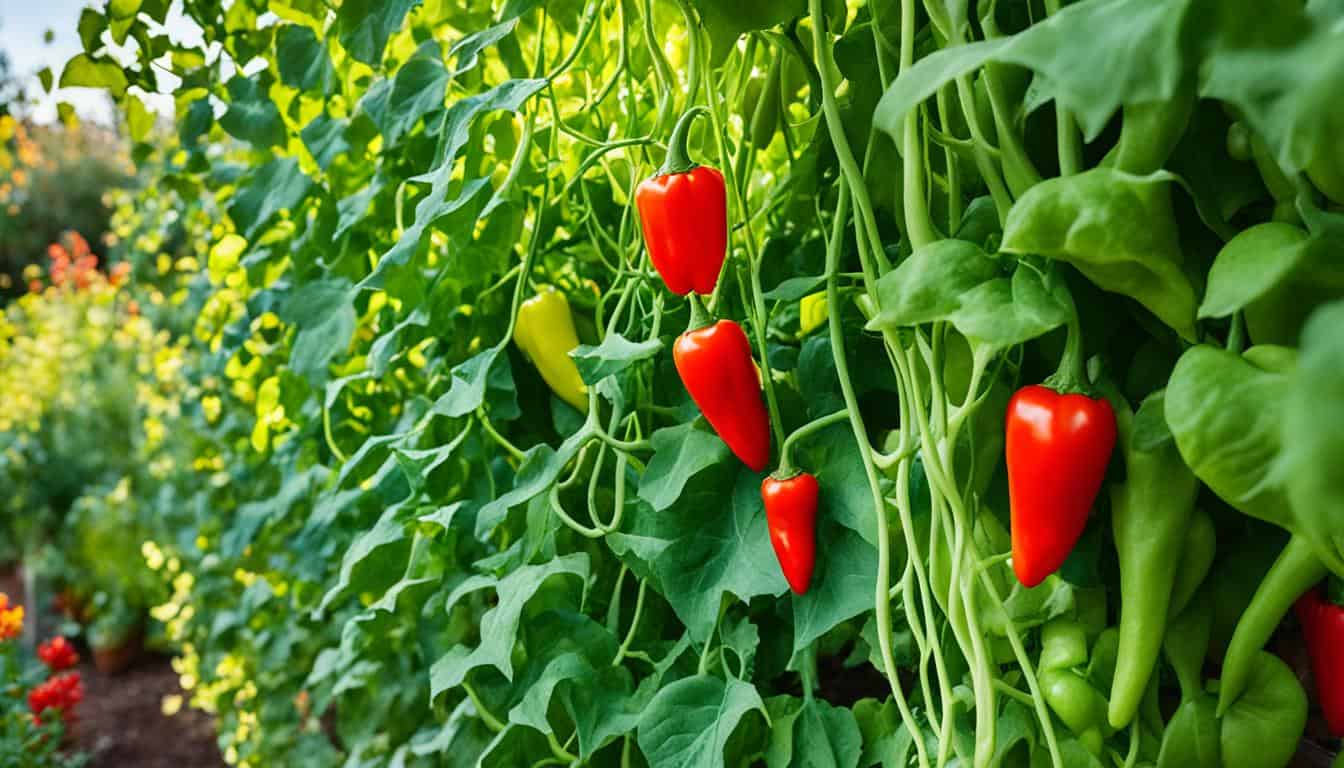
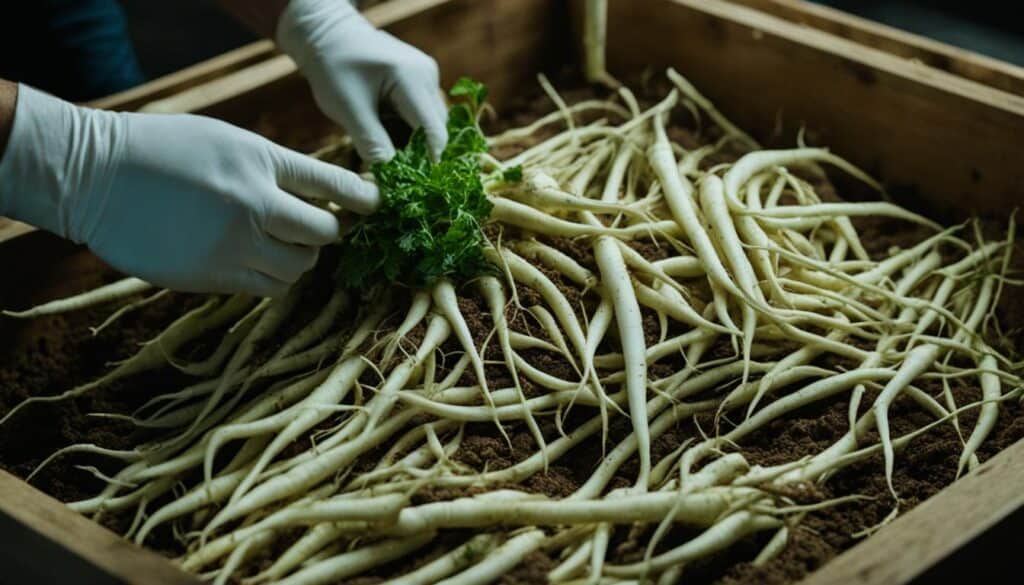
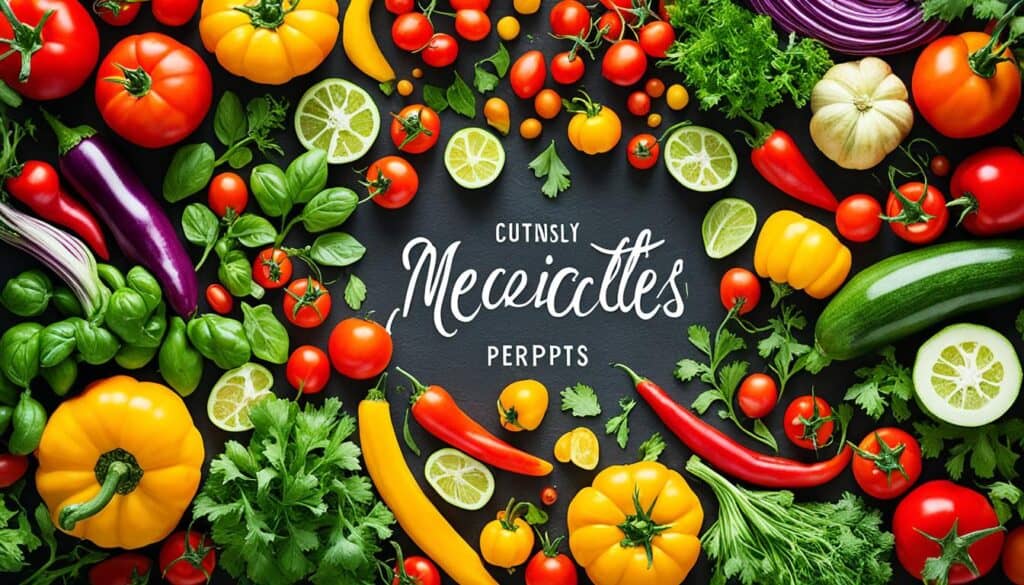
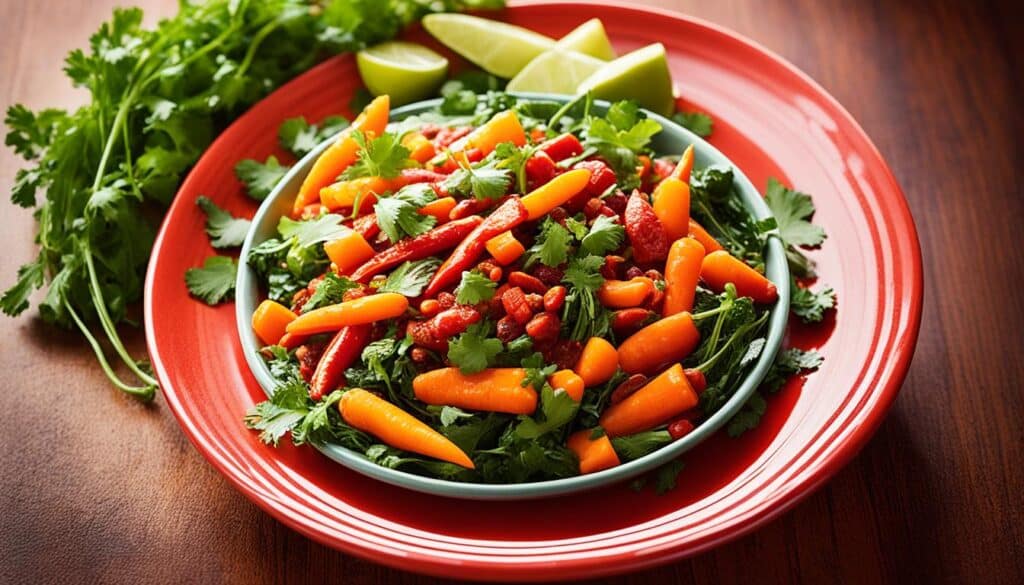
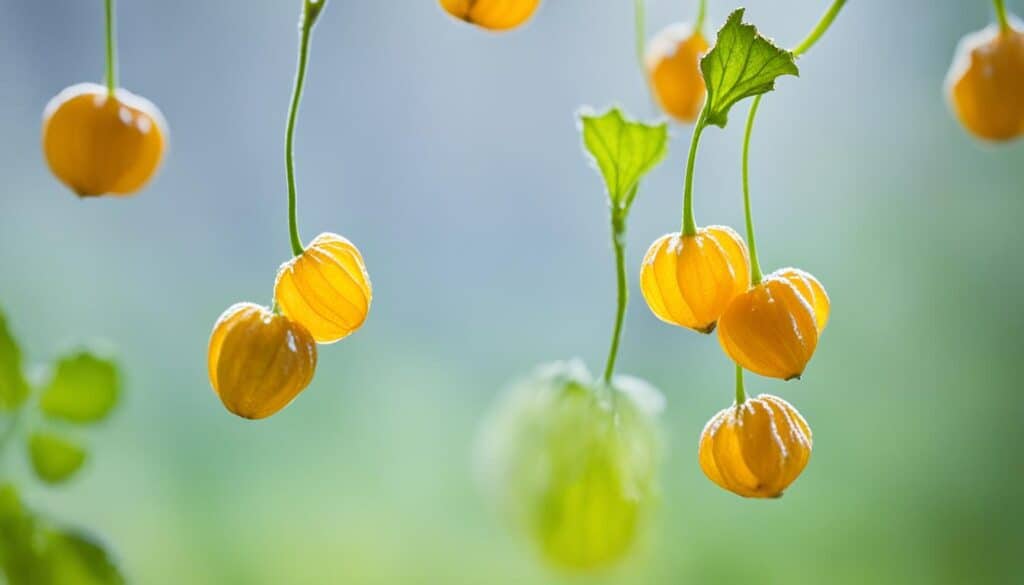
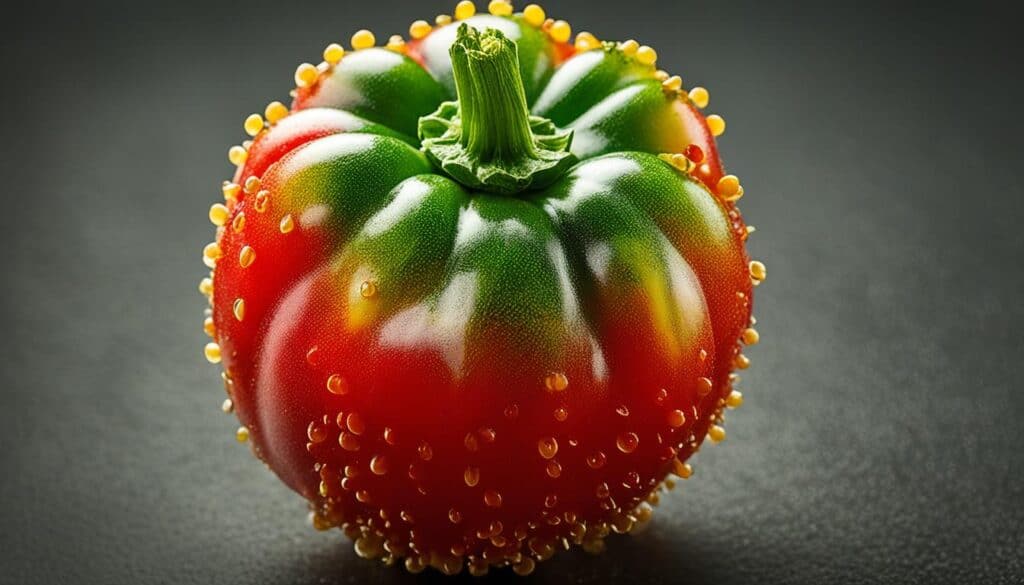



Leave a Reply